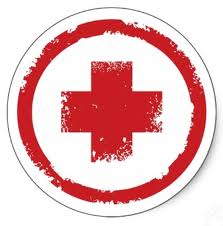Choosing Your Child's Group Workouts
 Wednesday, October 24, 2012 at 01:38PM
Wednesday, October 24, 2012 at 01:38PM  CAtennis
CAtennis  Let's be honest here, unless you're in the "top 1%" the amount of disposable income that you will have allocated to tennis will be limited. Thus, most families will choose group lessons over private lessons in order to save some money. Below are some tips for choosing the best group environment for your child and making the most out of the situation. If you're thinking about signing up your kid for one of these workouts, I would suggest utilizing a scale of 1 (bad) - 5 (great) for each category. Look for environments offering a combined score of 42 and above:
Let's be honest here, unless you're in the "top 1%" the amount of disposable income that you will have allocated to tennis will be limited. Thus, most families will choose group lessons over private lessons in order to save some money. Below are some tips for choosing the best group environment for your child and making the most out of the situation. If you're thinking about signing up your kid for one of these workouts, I would suggest utilizing a scale of 1 (bad) - 5 (great) for each category. Look for environments offering a combined score of 42 and above:
1. Substance over form. Whether it's called a "group workout", a "clinic", an "academy" or some other catchy name, look beyond the title. What does the activity offer? Stroke production? Fitness? Match play? Intellectual stimulation? Etc. You wouldn't buy a piece of tofu that's labeled "steak" so why would you rely on the name alone?! There are a lot of "tennis academies" out there that are glorified sports-themed babysitting clubs. If you want your child to not be a clown, don't sign him up for a circus.
2. Number of balls. How do you know if the group lesson is a circus or something that is oriented on development. A rule of thumb is to count the number of balls that are being hit. Note: for younger kids, shadow swings can count as balls being struck. If you see a lot of standing and goofing around, sitting down or nose-picking, the group is probably not very high quality. Look for every kid hitting at least 250-300 balls per hour (twice or three times more for kids U14 and older). Learning tennis is no different that learning how to read and write: repetition is key. Of course, nothing compares to an individual lesson (same as private tutoring) in terms of number of balls being struck but there are aspects of a group environment (e.g. competition) which can serve as a trade-off in making the ractice a positive learning experience.
3. Energy. Related to #2 is the concept of "energy." Look for an environment that is high on energy (from the pros as well as the kids). If the coaches aren't very motivated then the players will pick up on the low energy and run amok. Look for pros and players who want to be there. With respect to players, evaluate whether they are in fact interested in playing tennis or whether they are there simply because the parents are making them go. Also, determine whether the players push each other in a positive manner or whether they are undermining each others' development.
4. Discipline. Look for environments that have a zero-tolerance approach to training. This is related to point #3. Compare the group workouts to school. Would the child's behavior - be it being loud, showing up late, not trying, distracting his peers, cheating, whining, crying, smashing rackets, etc. - be tolerated at school? If not, then it shouldn't be tolerated at the workout either. Furthermore, these policies should be applied equally across the board, regardless of whether the player is good or bad and without consideration to parental influence.
5. Parental involvement. Look for environments where parents care about their child's tennis but, at the same time, are confident enough in the pros' abilities that they do not feel the need to become helicopter parents. Helicopter parents tend to cause too many distractions...they try to influence the group's direction to maximize the benefit derived by their child. If you see too many parents hanging around the fences - or worse, being on the court - understand that the pro's influence may be diminished by that of the parents. In the worst case scenario, the most pushy parents will run the practices indirectly (which means - the pro is unable to look for your child's best interest).
6. Mix. Here, you are looking for a workout that offers a variety of training tools: feeding; rallying; match-play; fitness; video-analysis; studying; etc. In order to develop as players, kids need to be exposed to all of these things. Feeding drills are intended to teach concepts artificially. Rallying drills are intended to implement those concepts in a live-ball format. Match-play is intended to implement the concepts in a more realistic setting. Furthermore, watching video analysis (watching yourself as well as watching pros) is helpful in giving the players a 3rd person viewpoint of their games so that they see how their game matches up to that of their heros. Fitness is, obviously, a huge component in a running sport such as tennis.
7. Training aids. Is the practice limited to baset drills or are the players exposed to training aids such as backboards, ball machines, various surfaces, gadgets, etc.? A good practice will not just teach players how to hit the ball but will also teach players how to teach themselves. It's good for players to know how to set up the ball machine in order to practice the skills on their own. It's also good for players to be exposed to backboards or walls so they know what drills they can do to sharpen their strokes. Very few players have had the benefit of having a support team around them 24/7/365. Players must be taught how to become self-reliant and it's the coach's job (private or group coach) to teach them how to do this.
8. Ethics. Determine whether the environment focuses on ethics. Is cheating or gamesmanship tolerated? Cheating is a learned behavior and some coaches (and, without a doubt, parents) live by the motto that "if you ain't cheating, you ain't trying." Besides being unethical, cheating is also bad for long-term development because kids who rely on cheating as a crutch to get them over the hump do not learn an invaluable lesson: tennis is hard work; there are no short cuts in the game (or in life). At some point, you will not be able to rely on cheating (being in an umpired match or in your professional life). Then what?!
9. Progress. Does the practice offer an active and objective track for the player to progress from one level to another? Look for a system where the players who have started out "on the bottom court" have worked their way up to "the top court". Is the progress subjective (i.e., coach determines when and how the player deserves to move up) or objective (i.e., merit-based: wins; dedication; skill-based testing)?
10. Pro's Knowledge. Last but not least, it's always good to have a pro "who's been there, done that." A pro who has gone through the development process him/herself - from juniors to college to pros - is more likely to understand what it takes at each stage. Look beyond the certifications (which are largely meaningless) and determine wheter the pro is good about communicating tennis concepts in a clear and concise manner. Furthermore, look for coaches who are passionate students of the game. Are they in shape? Do they still compete? Do they bring in outsiders to motivate the kids? Do they publish? Are they involved in organizing events? Are they interested in development or just earning a living? Etc.
Do you know of a good group? Let us know in the comments below.





